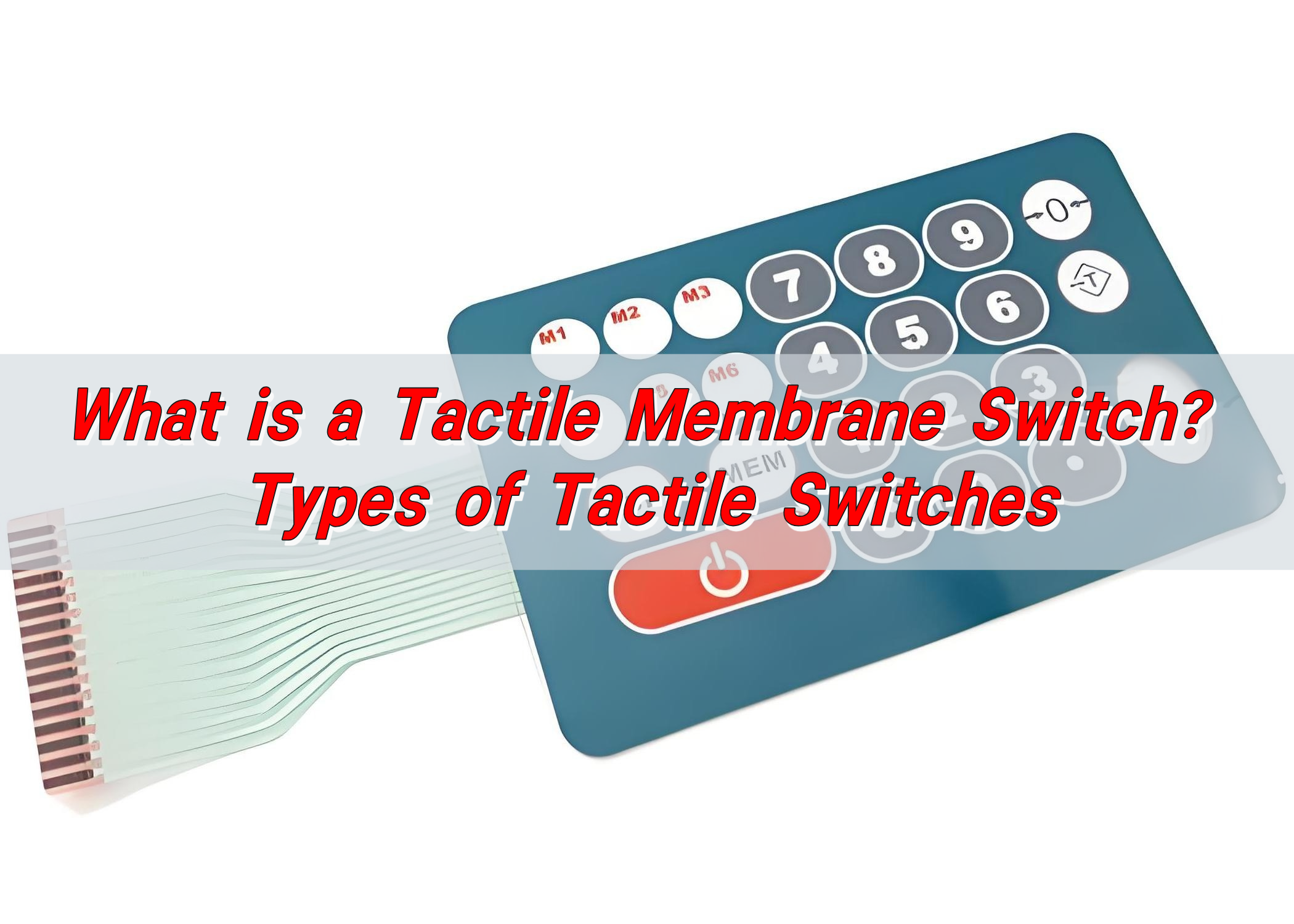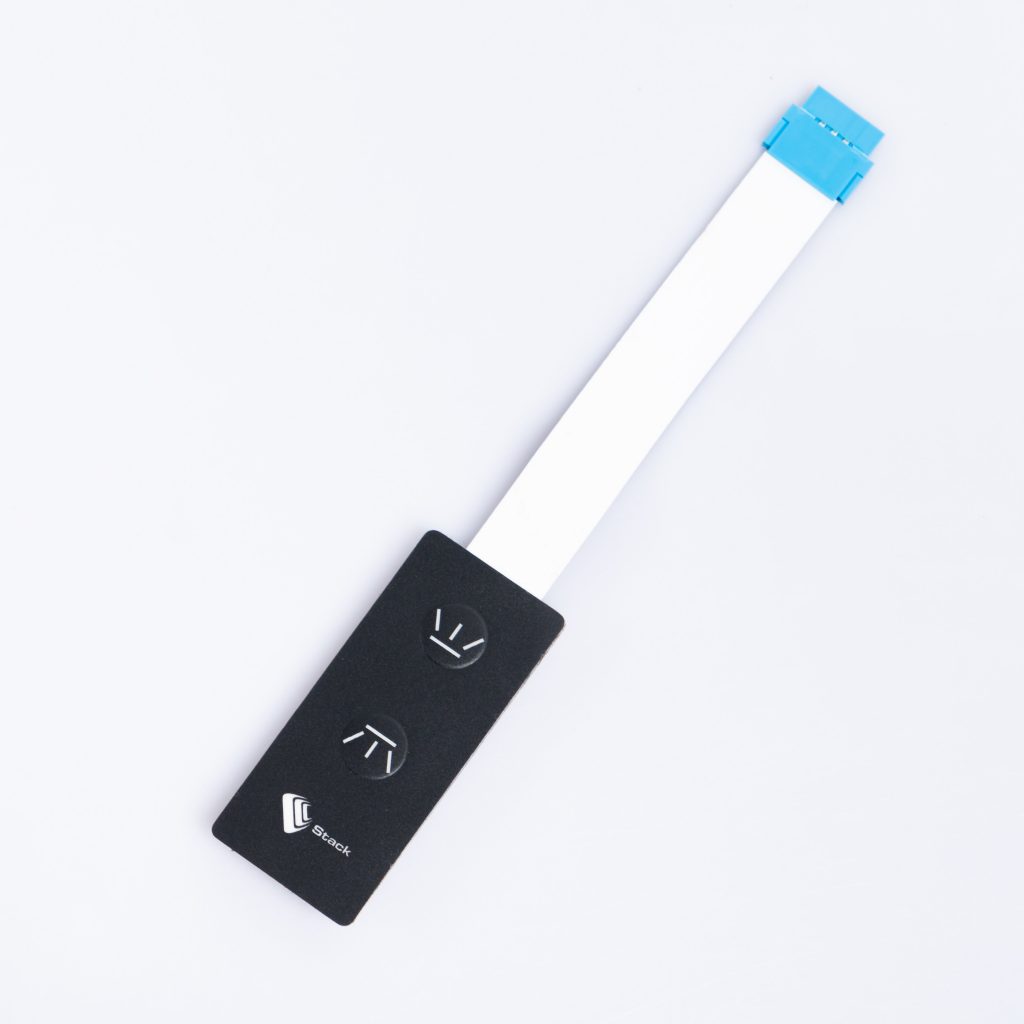The Manufacturing Refine Behind Membrane Switch Over: What You Need to Know
The production process behind membrane layer changes combines mindful style, material selection, and quality assurance. It begins with recognizing the ins and outs of membrane layer switch style and progresses with various stages, consisting of material options and printing strategies. Each stage plays a vital duty in guaranteeing capability and resilience. The intricacies of layer building and construction and the strenuous screening criteria might reveal understandings that are not quickly obvious. What exists past these foundational elements?
Comprehending Membrane Layer Switch Over Design
Although membrane layer switches may appear basic initially glance, their design includes complex considerations that guarantee performance and longevity. The design process starts with a complete understanding of user needs, including the interface's intended application and ecological elements. Functional designs is a crucial element, as the design needs to assist in simplicity of use while guaranteeing that tactile feedback fulfills customer expectations.Moreover, the layering of parts, such as graphic overlays, sticky layers, and conductive traces, have to be precisely crafted. membrane switch. This split arrangement not just influences the switch's responsiveness yet additionally affects its durability. Attention is provided to the securing methods utilized to protect versus moisture and dust, which could endanger performance. Additionally, layout factors to consider prolong to aesthetic appeals, where color design and aesthetic clearness enhance customer experience. Eventually, the design of membrane layer switches balances performance, user experience, and sturdiness, guaranteeing that they meet the needs of various applications successfully
Materials Used in Membrane Layer Switch Production
When selecting products for membrane button manufacturing, it is important to ponder both performance and longevity. The main products consist of polyester and polycarbonate movies, which offer adaptability and strength. These movies are frequently covered with adhesive to ensure correct bonding to substrates. Conductive inks, generally composed of silver or carbon, are important for creating electric links within the switch, permitting dependable operation.Additionally, a safety layer, such as a tough layer, is frequently used to boost scratch resistance and durability. The selection of backing material, such as acrylic or foam, can considerably affect the button's tactile feel and total user experience. Numerous environmental elements, including temperature and moisture, must lead product selection to ensure peak performance in certain applications. Inevitably, the appropriate combination of materials adds to the membrane switch's performance and life expectancy, making notified options necessary for suppliers.
The Printing Refine: Creating Video and Text
The printing procedure in membrane layer button production plays a substantial duty in generating high-quality graphics and text. Various visuals design methods are employed to guarantee visual appeal and functionality, while mindful ink choice techniques are essential for resilience and performance. Understanding these elements is basic for attaining finest cause membrane layer button style.
Graphic Design Techniques
Graphic design strategies play a vital function in the printing process of membrane layer switches, as they define exactly how graphics and message will inevitably appear on the end product. Effective visuals design entails the calculated use shades, designs, and typefaces to improve readability and visual charm. Designers commonly utilize vector graphics for scalability, making certain that images continue to be sharp at various sizes. Additionally, attention to comparison and alignment is crucial, as it influences individual communication and aesthetic high quality. The incorporation of branding components, such as logo designs, should be taken care of with care to preserve brand name honesty. In general, thoughtful visuals design methods add considerably to the performance and good looks of membrane switches, affecting individual experience and product performance.
Ink Choice Approaches
Selecting the suitable ink is necessary for attaining the desired visual quality and toughness in membrane layer button production. Different ink types are made use of, including solvent-based, water-based, and UV-curable inks. Each kind supplies distinct qualities, such as resistance, adhesion, and versatility to environmental elements. Solvent-based inks are typically favored for their sturdiness and vibrant shades, while water-based inks are much more eco-friendly yet might have restrictions in adhesion. UV-curable inks supply fast healing and robust performance. Furthermore, shade matching methods ensure that the selected inks align with layout requirements. Inevitably, the option of ink need to consider elements such as application approach, substratum compatibility, and end-use demands to attain remarkable lead to membrane switch graphics and text.
Layer Construction and Assembly

Material Selection Process
A careful choice of materials is necessary in the production procedure of membrane buttons, as it straight affects capability and durability. The you can check here primary materials used consist of polyester, polycarbonate, and various conductive inks. Polyester is often favored for its superb resistance to chemicals and abrasion, making it ideal for rough settings. Polycarbonate, on the various other hand, supplies remarkable quality and effect resistance, which is helpful for applications needing exposure and toughness. Conductive inks, usually composed of silver or carbon, are vital for creating reliable electric paths. Furthermore, the choice of sticky materials influences the total stability of the switch - membrane switch. Evaluating variables such as ecological exposure, tactile responses, and visual demands guides manufacturers in picking the most effective materials for their specific applications
Layer Attachment Methods
Adhering layers in membrane layer button building and construction is a crucial procedure that ensures capability and long life. Different adhesion strategies useful content are utilized to secure excellent bonding in between layers, which generally consist of making use of adhesives, heat, and stress. Pressure-sensitive adhesives (PSAs) are commonly used for their convenience of application and instant bonding capabilities. In addition, thermal bonding techniques can be used, where heat is utilized to activate sticky residential or commercial properties, securing a solid bond. The choice of bond approach mostly relies on the materials included and the specific application demands of the membrane layer switch. Correct alignment and consistent application of adhesives are important to stop defects, protecting the button runs efficiently throughout its designated lifespan.
High Quality Control Actions
Guaranteeing quality assurance throughout the layer construction and assembly of membrane buttons is crucial for maintaining performance and integrity. This process usually entails numerous crucial procedures, consisting of detailed inspections at each stage of production. Producers utilize innovative testing methods, such as peel tests and attachment analyses, to verify the integrity of layer bonds. Additionally, aesthetic examinations are conducted to identify any defects in printing or material disparities. Environmental conditions, such as temperature and humidity, are thoroughly kept track of to ensure ideal curing and adhesion. Normal calibration of tools assists preserve accurate manufacturing criteria. By carrying out these high quality control steps, producers can considerably minimize the danger of product failing, ensuring that the final membrane layer changes satisfy the required requirements and consumer assumptions.
Evaluating and Quality Assurance Actions

Developments in Membrane Switch Over Innovation
As advancements in modern technology continue to look these up evolve, membrane layer switches are gaining from ingenious developments that improve their functionality and customer experience. One noteworthy innovation is the combination of capacitive touch technology, which enables for more receptive and intuitive interface. This shift not just improves appearances however additionally decreases mechanical damage, extending the life expectancy of the switches.Additionally, advancements in visuals overlay materials have led to boosted sturdiness and resistance to ecological elements such as wetness and UV light. These products now use boosted clarity and illumination, additional raising the aesthetic appeal.Furthermore, the incorporation of wise modern technology is transforming membrane switches over right into interactive control panels, allowing connection with IoT devices. This connection fosters a seamless individual experience, leading the way for applications in different sectors, from medical care to consumer electronics. Collectively, these advancements placement membrane layer switches as vital parts in modern-day tool layout.
Frequently Asked Questions
The length of time Does the Membrane Change Production Refine Take?
The period of the membrane layer button production procedure can differ substantially. Variables such as intricacy, products made use of, and manufacturing quantity influence timelines, with normal manufacturing ranging from a couple of days to numerous weeks for conclusion.
What Are the Typical Applications for Membrane Layer Switches?
Membrane buttons are generally made use of in numerous sectors, consisting of vehicle controls, family home appliances, medical devices, and consumer electronics (membrane switch). Their versatility and durability make them perfect for applications requiring user-friendly user interfaces and trusted efficiency in varied atmospheres
Can Membrane Switches Over Be Custom-made for Certain Requirements?

What Is the Lifespan of a Common Membrane Layer Change?
The life-span of a regular membrane layer button differs, but generally, it ranges from 1 to 5 million cycles. Elements such as usage, environment, and material quality significantly influence sturdiness and general efficiency gradually.

Are Membrane Layer Changes Ecologically Friendly?
The environmental kindness of membrane layer changes varies. Some products utilized may not be recyclable, while others can be environmentally friendly. The overall influence relies on producing practices and products, necessitating mindful consideration during option and disposal. The production process behind membrane layer changes combines careful layout, material selection, and top quality control. It begins with recognizing the details of membrane button style and progresses via various phases, including product options and printing techniques. When choosing materials for membrane layer switch manufacturing, it is important to ponder both performance and durability. A mindful selection of products is important in the production process of membrane layer switches, as it directly affects performance and longevity. The choice of attachment method greatly depends on the materials included and the specific application demands of the membrane layer switch.